Destination Guide
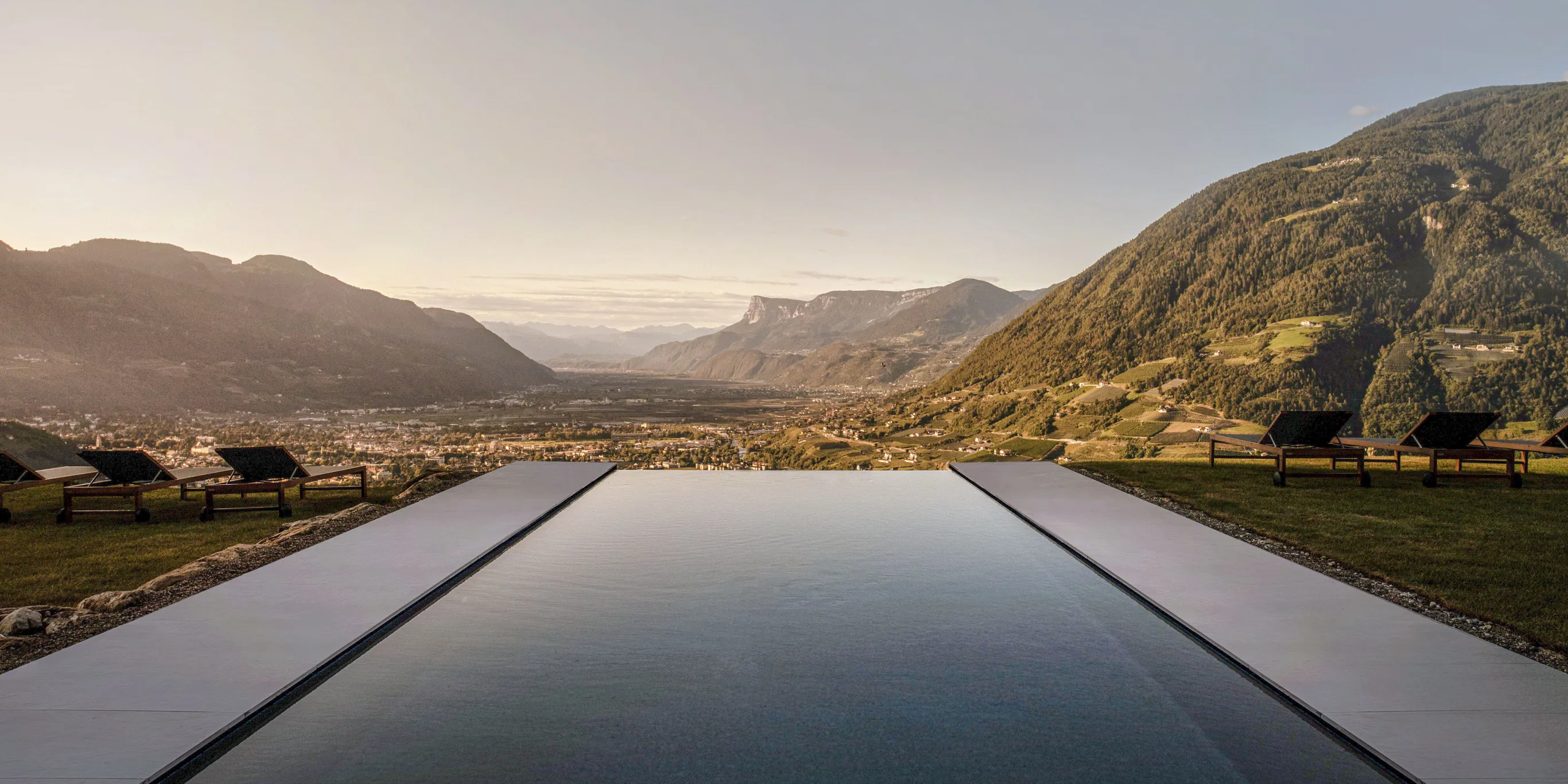
Here, story-book jagged mountains rear on all sides, half-timbered houses encircle church spires, castles sport conical roofs, and paths lure you into dark forests à la Grimm Brothers’ fairytales.
The autonomous province, while steeped in alpine traditions, feels progressive and forward-thinking thanks to its long-established sustainable credentials and award-winning culinary scene. Italy’s richest region, South Tyrol has invested heavily in renewable sources, such as hydropower, solar, wind, and geothermal. More than 85 percent of the houses that have been certified as energy efficient in the country are here.
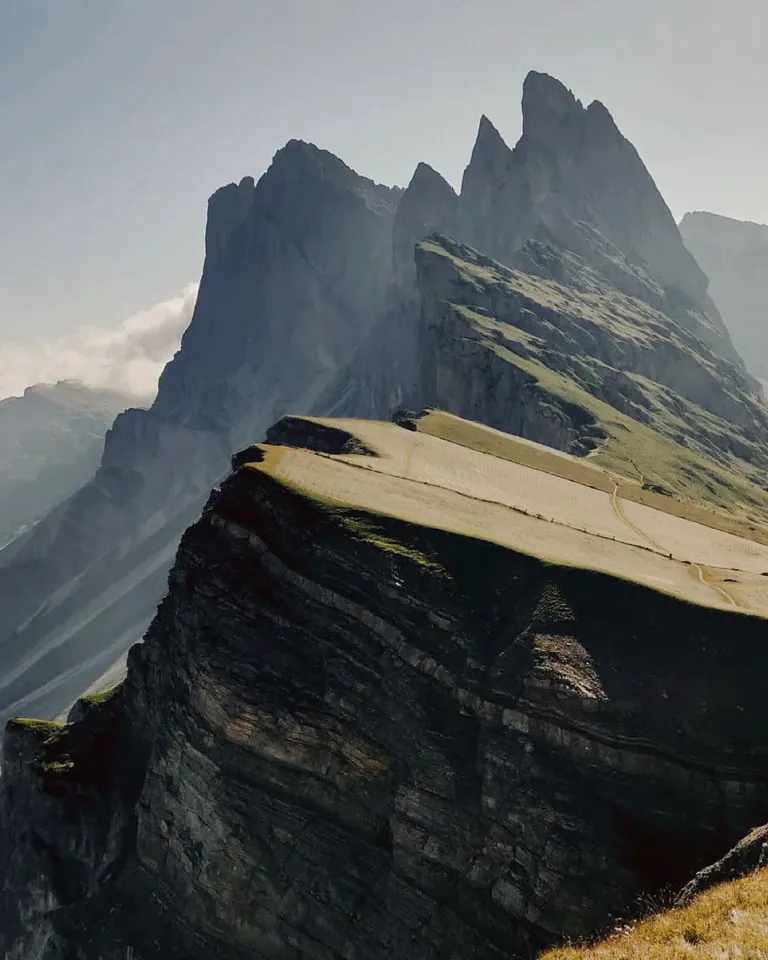
The Dolomites A UNESCO world heritage site
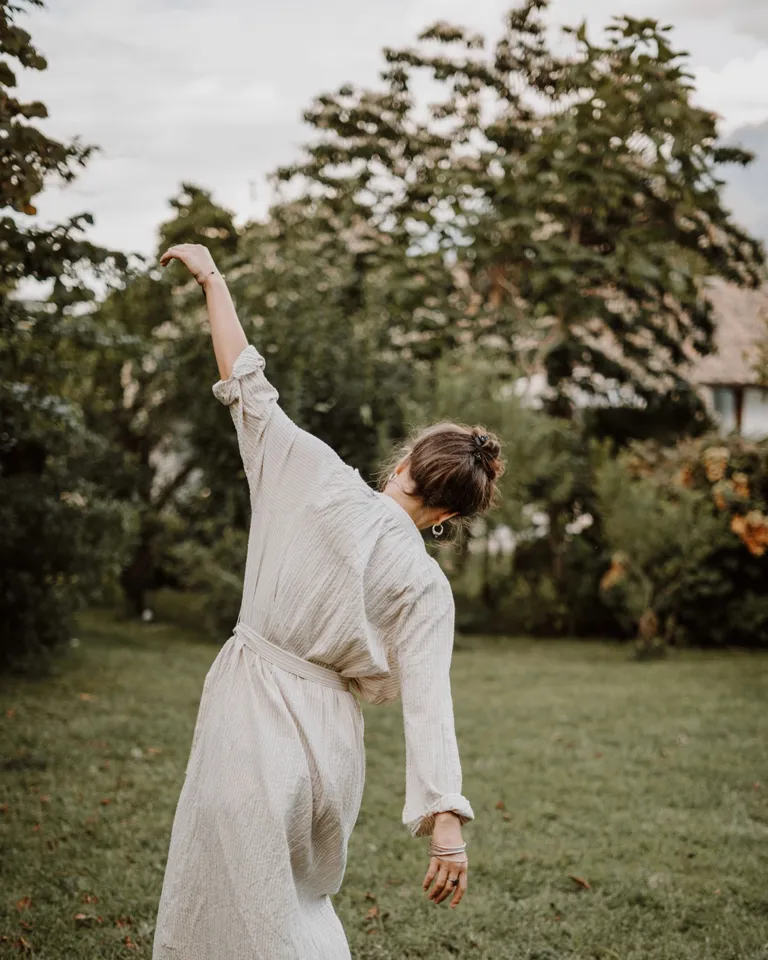
Hotel Schwarzschmied Pleasure and nature fuse outdoors
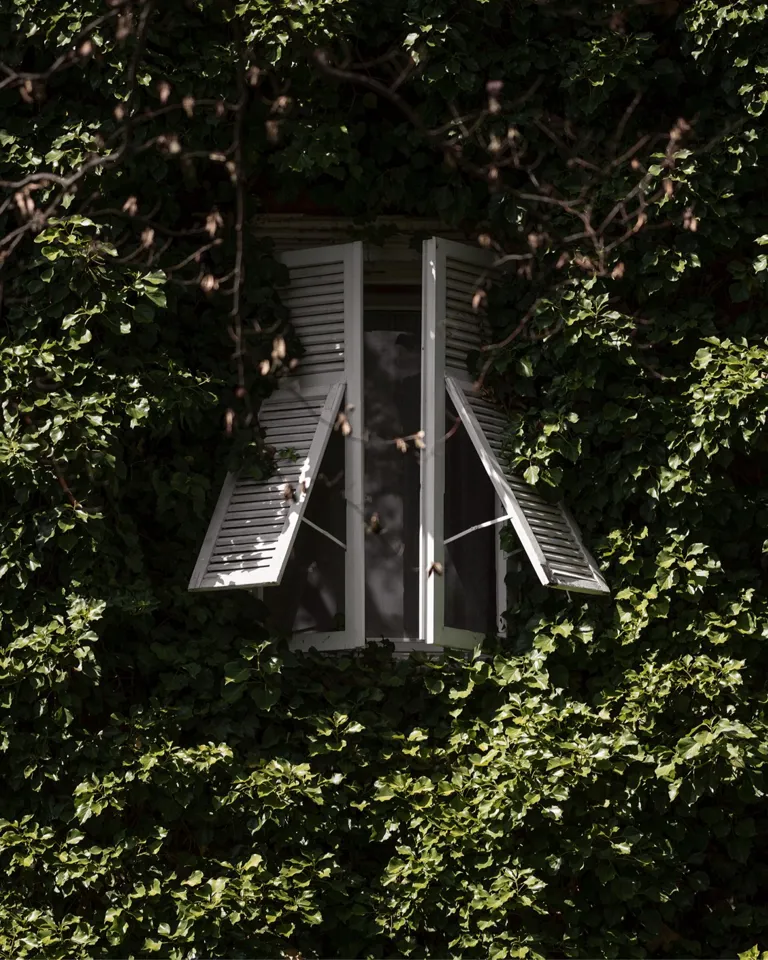
Parkhotel Mondschein The hotel's ivy-covered facade blends into its surroundings
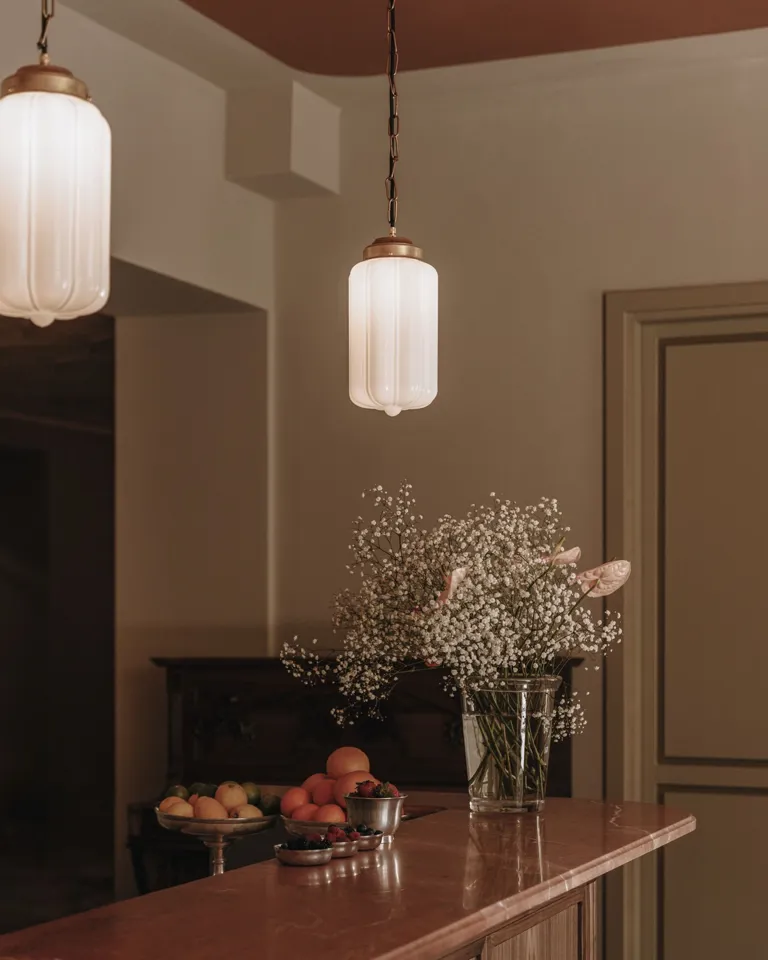
Luna Bar Parkhotel Mondschein's relaxed gathering spot
Hotels have been leading the charge of change opting for all things local, be they produce, materials, and even architects. Their restaurants commonly feature vegan and vegetarian menus; the spas emphasize traditional treatments with products harvested from the Tyrolean forests (mountain pine oil bathing, anyone?); and even the wines are conscientious with leading vineyards like Alois Lageder, Ansitz Dornach, and Tröpfltalhof following biodynamic principles. But above all else, life in the Dolomites is closely connected to nature as you will see on our journey across this unspoiled gem that inspires more “wow” moments than we cared to count.
For picturesque Dolomite beauty, by which we mean, 3,000-meter peaks alternating with vineyards, alpine flowers with palm trees, and farms with modern architecture, Merano is a sure bet. The spa town of the Austro-Hungarian empire was said to have been visited by Empress Elisabeth of Austria and later Franz Kafka for its fresh mountain air and therapeutic mineral water. Thanks to its particularly ideal microclimate, the town has apples, grapevines, and palm trees flourishing in equal abundance. And while centuries-old castles, fortresses, and picturesque alleys with tempting shops might lure you, the call to head up the mountains is visceral.

Merano View of the Gothic St. Nicholas Cathedral
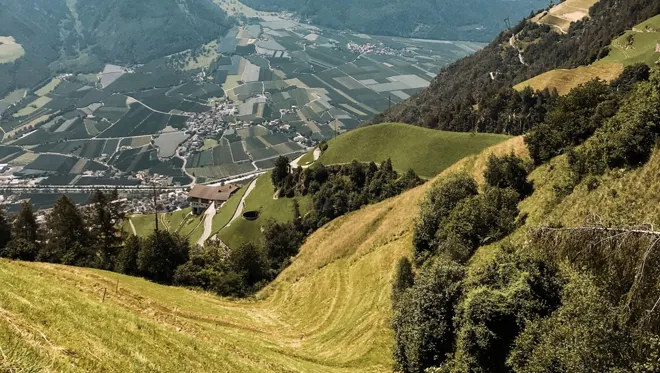
The Merano High Mountain Road A stunning hiking trail
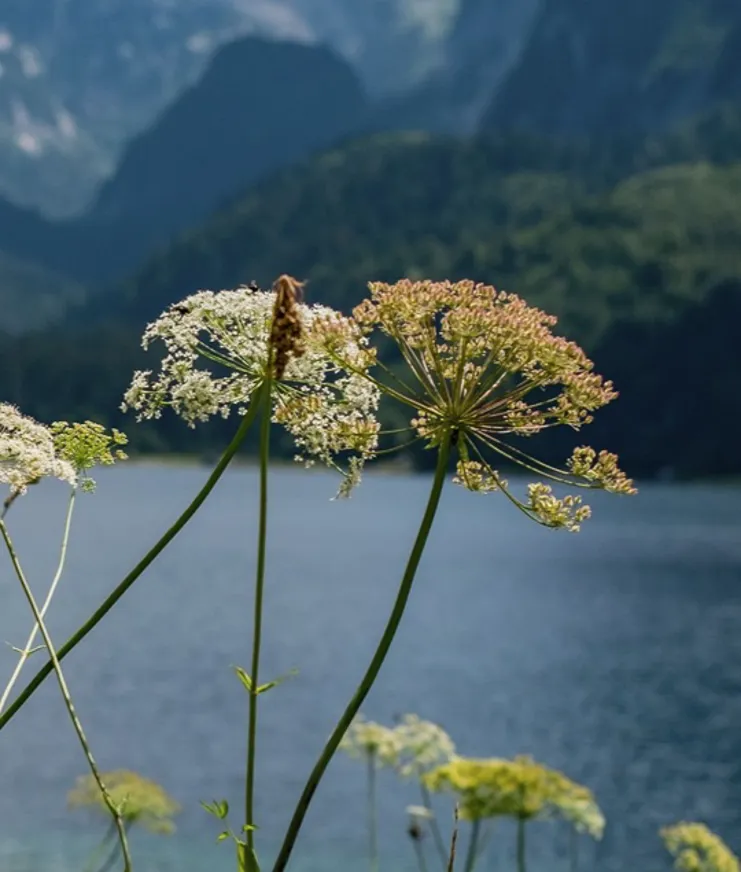
Alpine blooms The yarrow
About an hour from Merano, the Texel Group Nature Park enchants with its thick pine woods, sun-lit meadows, high moorland, lovely pastures, tumbling streams, crystal-clear lakes, little farms, steep rock faces, and imposing mountain peaks. The region’s largest nature park is a treasure trove of flora and fauna, Europe’s highest Alpine lakes, and one of the most beautiful hiking trails, the Meran High Mountain Road.
Wellness is never far behind in South Tyrol. Inspired by the Japanese concept of Shinrin-Yoku or forest bathing, Vigiljoch in Lana offers its own alpine version. What better way to reduce stress and revitalize your body than by inhaling the fresh, clean air and sharpening the senses on the mountain? Or try Kneipp walking, where you walk barefoot first in hot water then cold, passing through brooks and streams that wind through idyllic natural landscapes. Then there’s hay bathing, a century-old tradition in Alto Adige, where baths are filled with mountain herbs such as arnica, wildflowers, mountain grass, and hay to soothe tired bodies.
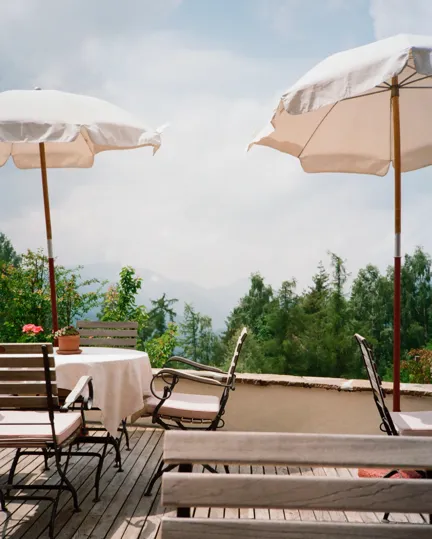
Lana Lana's high mountain eateries offer high-quality meals
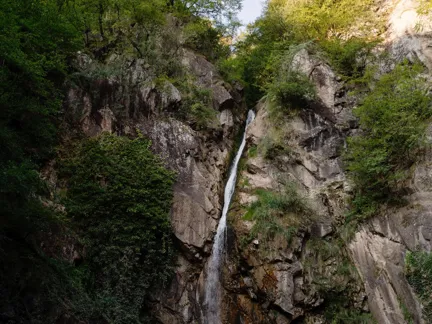
Perch with a view The mineral-rich water here is revered for its healing properties
A picturesque introduction to the Waalweg (ancient waterways) is the Marlinger Waalweg, a sensory walk accompanied by the sounds of a babbling brook and the sweet aromas of orchards plump with apples and plums, among others. Built nearly 300 years ago, the Marlinger gently weaves from Etschtal Valley to Töll. A highlight are the mountain huts strewn along hiking trails that offer not just hearty alpine cuisine but high-quality dishes using fresh local ingredients alongside sumptuous views.
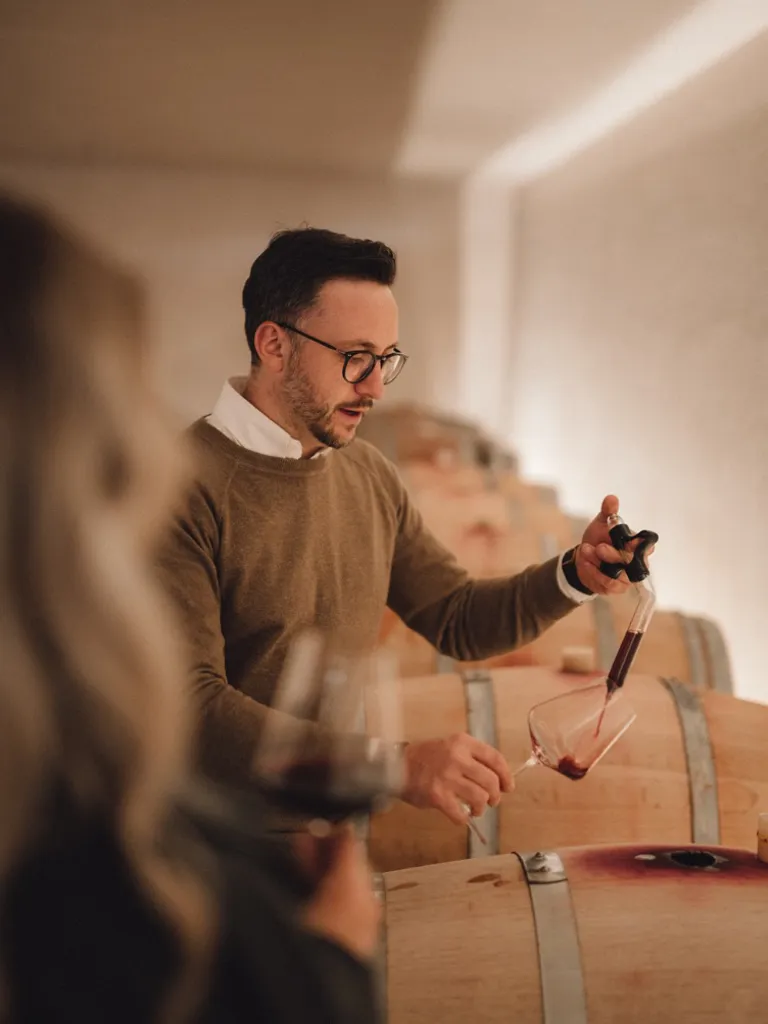
The Pitzner Winery & Suites A young and progressive family of winegrowers housed in the former arms plant of the Karneid Castle.
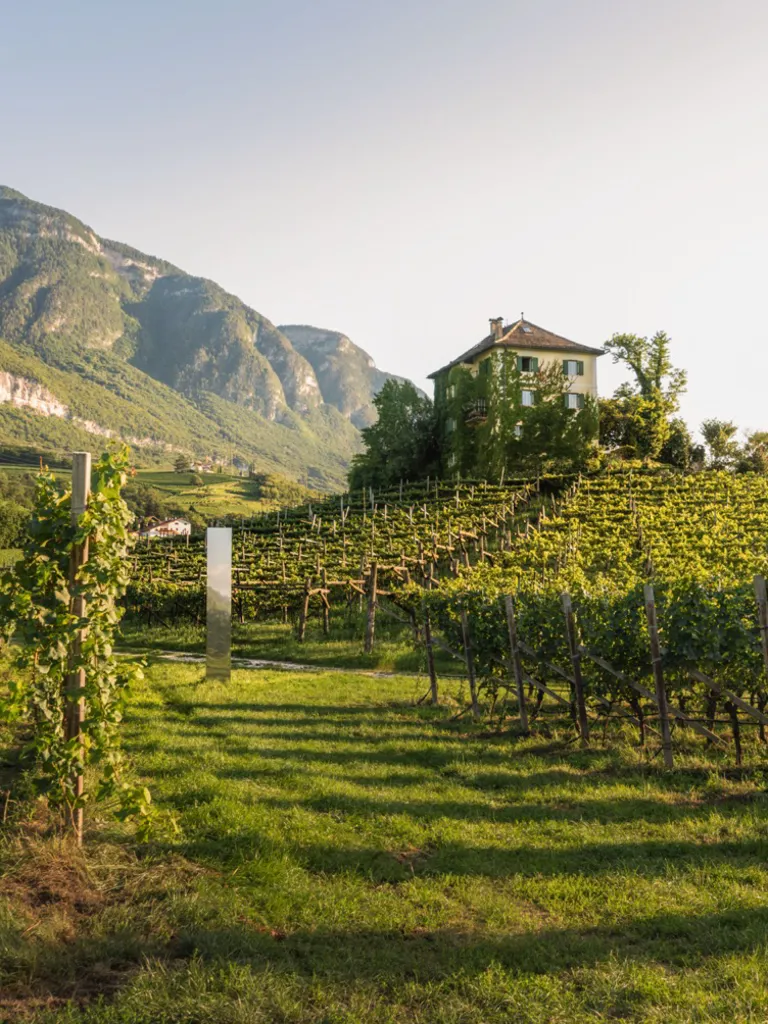
Baron Longo Especially gentle cultivation methods and the complexity of the soils provide extraordinary wine quality and incomparable flavor at this historic winery.
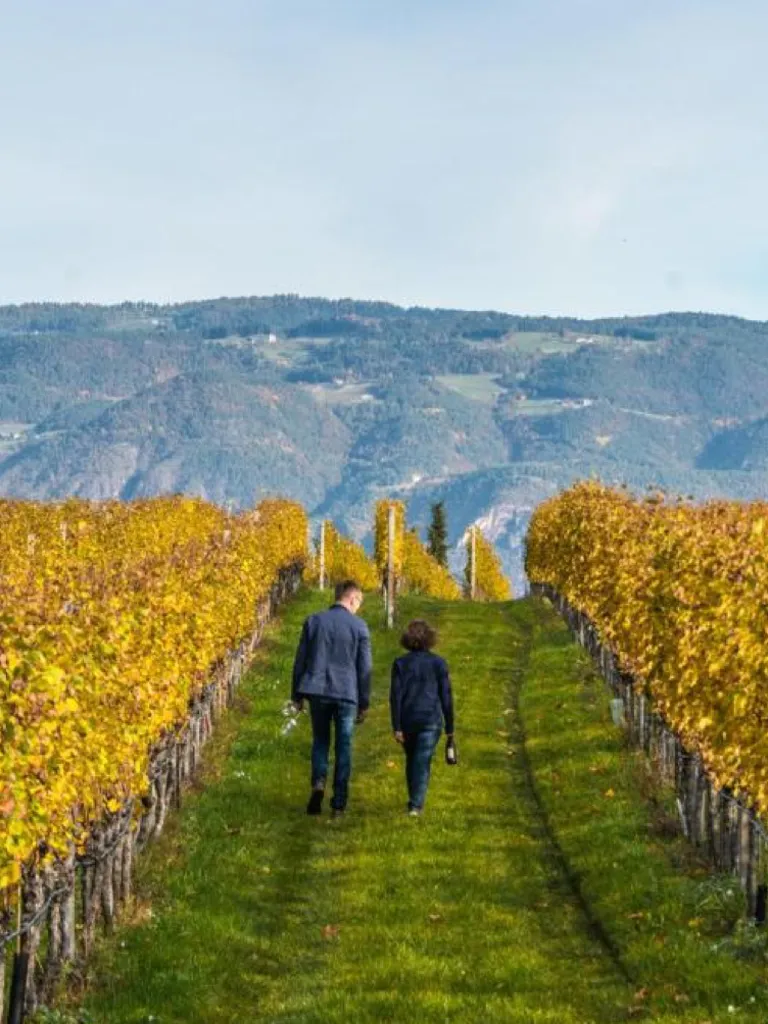
Abraham Marlies and Martin Abraham work intensely to care for their plants and award-winning wines in the variety of locations they grow them.
Located at the heart of Etschtal Valley, Lana sits between wonderful nearby Merano—it’s a 30-minute bicycle ride through orchards—and Bolzano. Filled with fairytale castles and twisted medieval streets, the town offers seriously good food from farm-to-table to Michelin-star dining. One of the best in the region, 1477 Reichhalter’s award-winning restaurant provides intentional and local cuisine where traditional recipes pair perfectly with regional wine, making for a wholesome and homely experience.
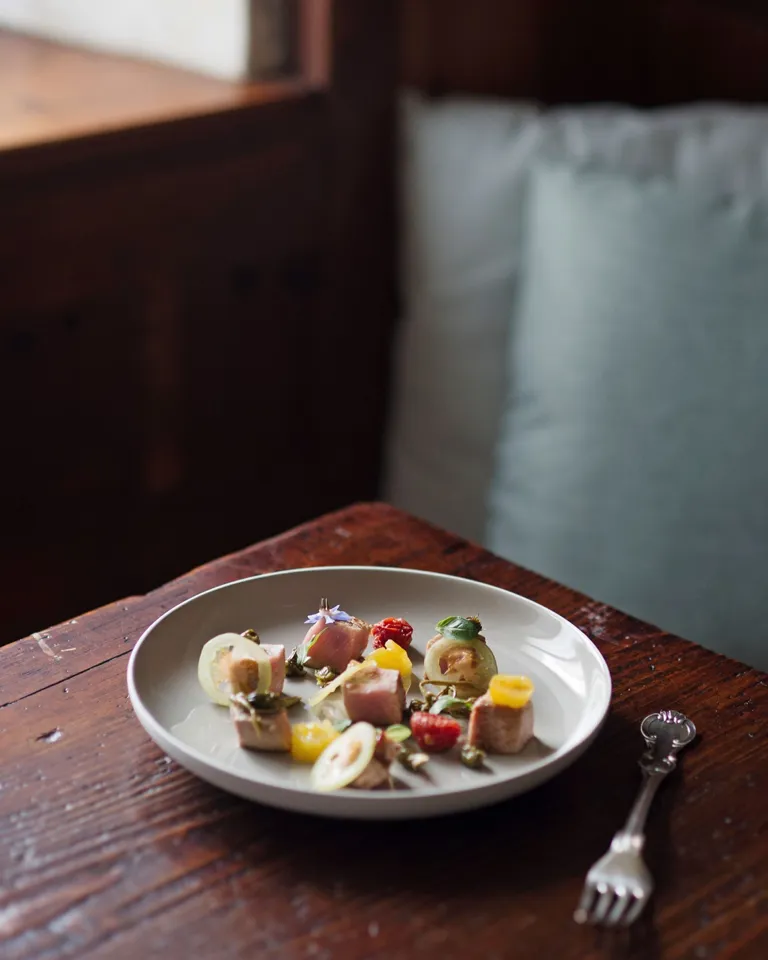
1477 Reichhalter The award-winning restaurant focuses on fresh regional ingredients
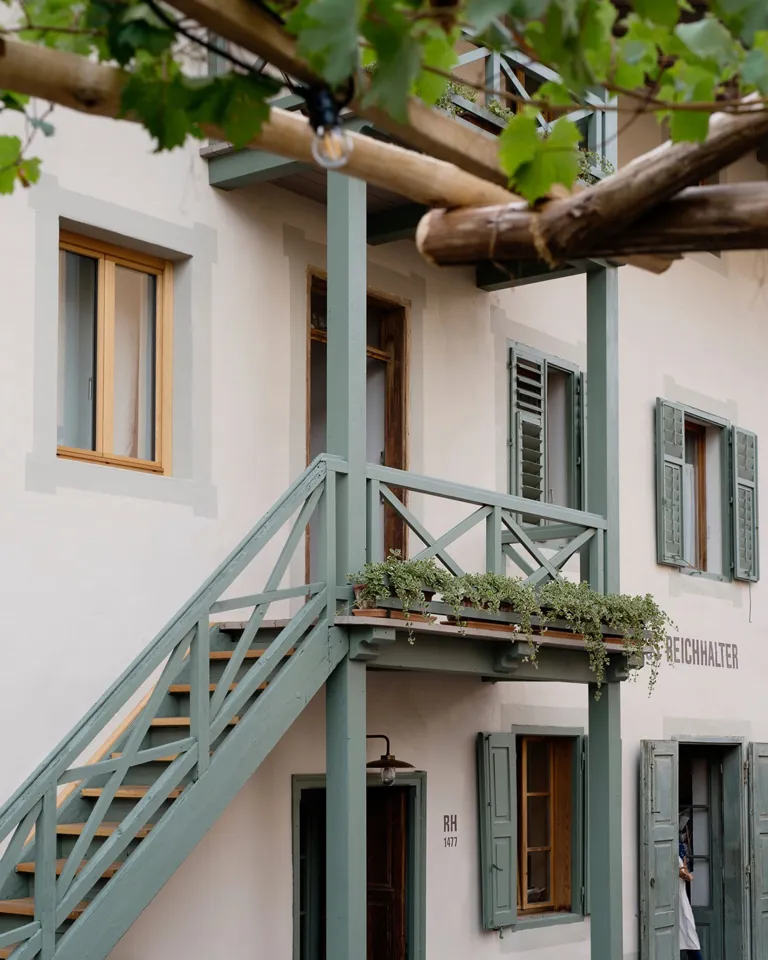
Old World charm The building is over half a century old
Under an hour by train from Lana, Bolzano has a Mediterranean meets alpine flair. The region is filled with idyllic villages, fragrant apple meadows, and historic buildings. Its lively provincial capital feels very Tyrolean, with its narrow Gothic arcaded streets and picturesque squares. For a more contemporary take, head to Zaha Hadid’s Messner Mountain Museum, which aptly for a space dedicated to mountaineering, is sunken into the edge of a plateau and provides three great viewing windows emerging from the rocks.
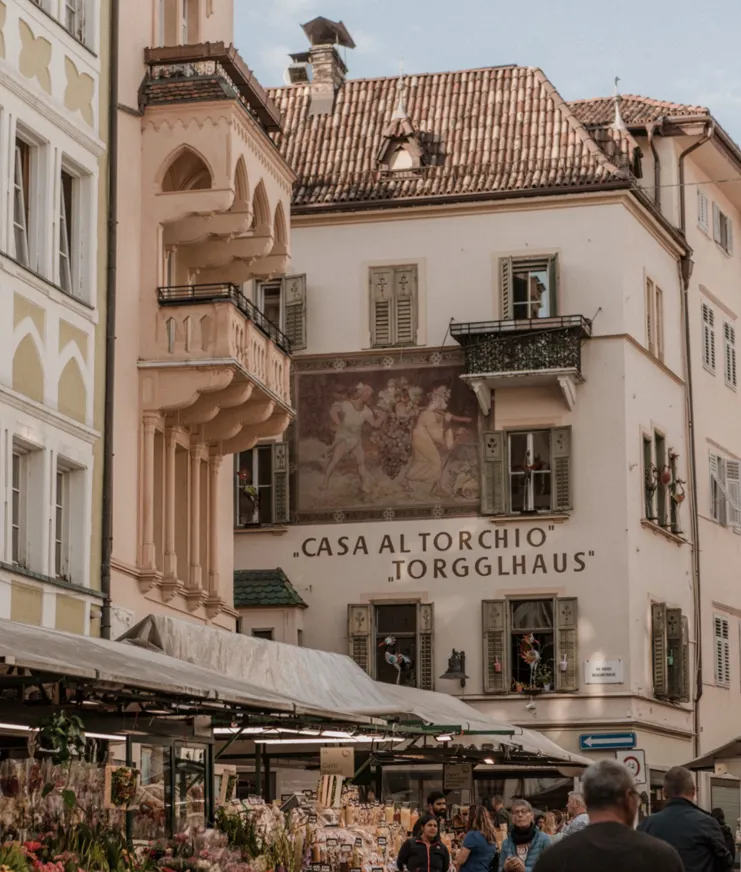
Bolzano's historic center Composed of narrow streets and ancient buildings
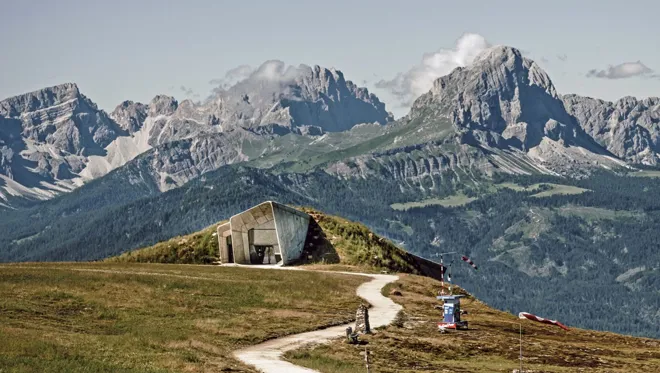
Messner Mountain Museum Atop Mount Kronplatz

Alpine lakes Perfect for adventure and relaxation
Bolzano is also known for its wine region, which stretches from the Sarntal to Salurn. The shortest wine route starts in Caldaro through a forest to the two Montiggler Seen lakes. The twin lakes, known for their bright blue color that mirrors an even brighter sky, are popular among the locals for a swim. Next on the route is the historical wine village of Cornaiano, which invites you to explore its underground cellars that take up more space than the village itself. Eventually you will circle back to Caldaro by the lake, where you can taste the famous wine named after the Kalterer See.
A bit further is the Grand Canyon of South Tyrol, the Bletterbach Gorge located at the foot of Mount Corno Bianco. The UNESCO World Heritage Site provides a unique insight into the world of rocks and the geological peculiarities of the Dolomites as well as imprints from millions of years ago from dinosaurs, fossil plant remains, and marine deposits.
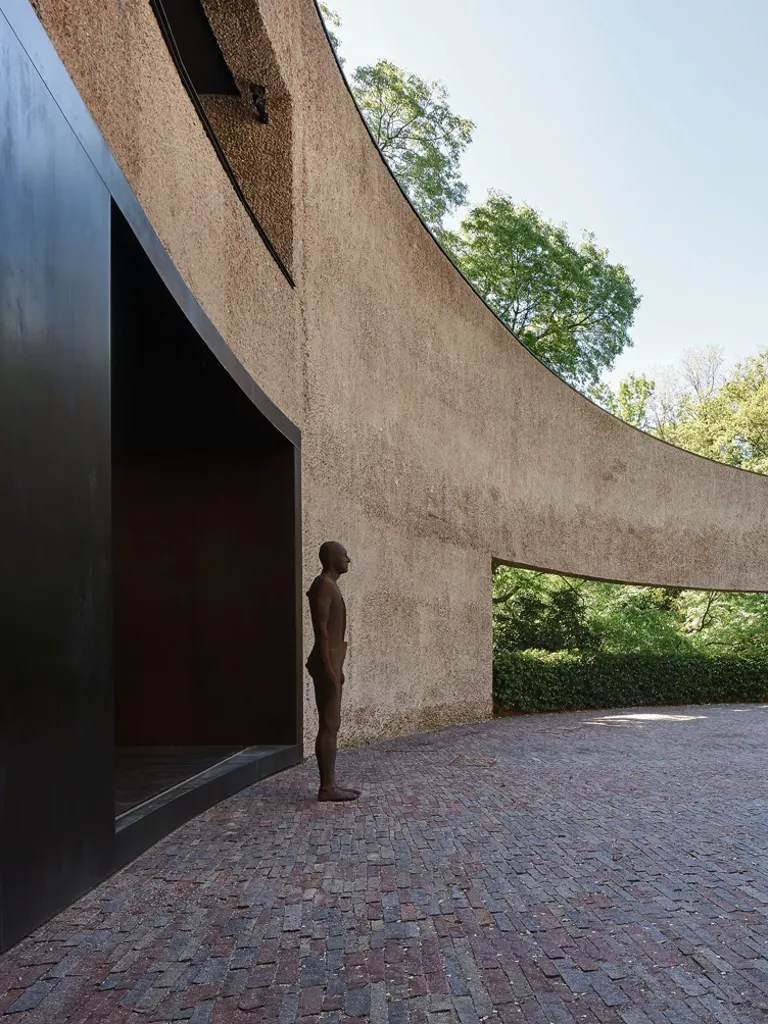
Fondazione Antonio Dalle Nogare Set in the hillside, the striking architecture of the foundation reminiscent of a concrete bunker, showcases the most disruptive expressions of contemporary art.
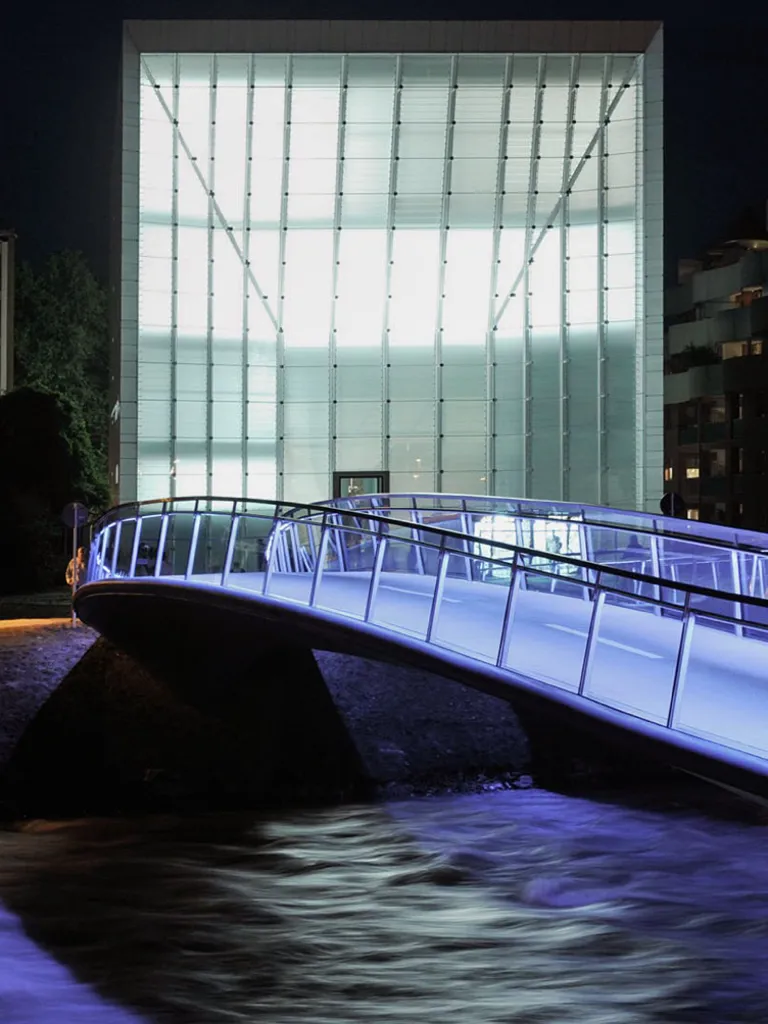
Museion One of Bolzano’s crown jewels, the museum sports an imposing architectural presence while hosting exhibitions that compete with the best in the world.

Biennale Gherdëina The art festival produces site-specific contemporary works of art, which are exhibited in the most important public spaces in Alto Adige in the summer.

Castelrotto is located just 45 minutes from Bolzano. This lovely resort town lends itself well to hikes suitable to all levels and long wanderings, such as visiting the 3,000-meter-high pastures of Alpe di Siusi. A meditative experience in the summer, with crowds of skiers absent, the pastures are carpeted in seas of velvety grass, a kaleidoscope of wildflowers, and dark pinewoods with spectacular summits on all sides rising above the clouds, like the Sassolungo and Mount Bullaccia.
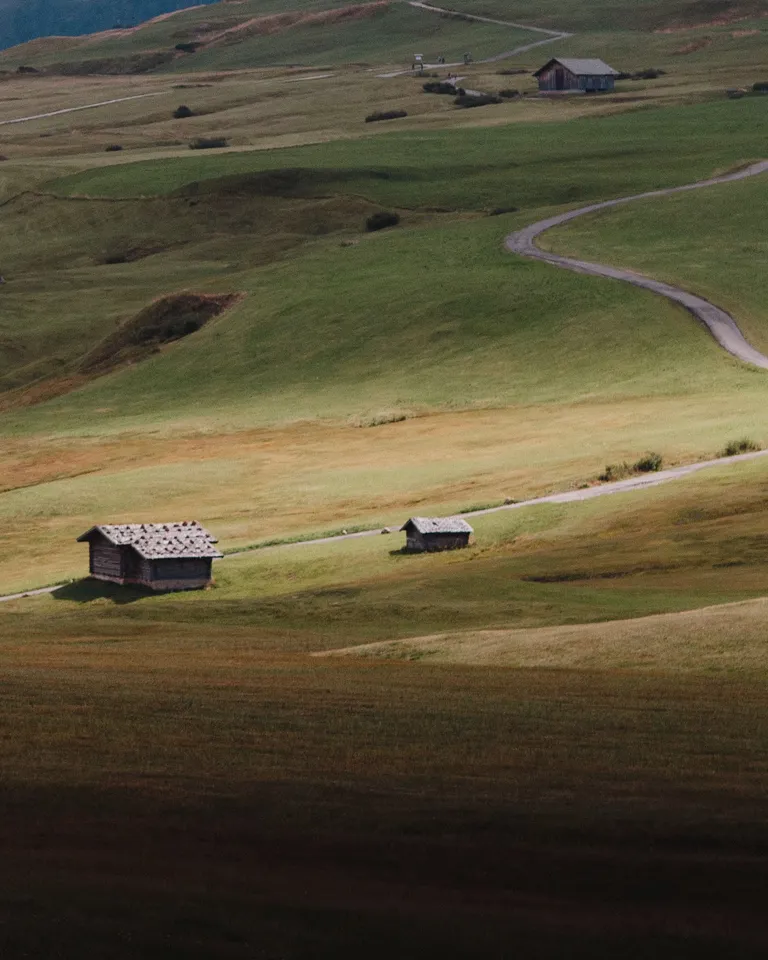
Experience authentic South Tyrol On the farms and pastures

Tre Cime di Lavaredo With its three jagged limestone peaks
For an easier hike, the Seceda is accessible by gondola and takes you amid the serrated crests and jaggy peaks that so characterize the mountains in Puez Odle Nature Park. Suspended among the clouds and dangling from what seems to be the edge of the world, the staggering drop-offs really make for an empowering experience in the Dolomites. One of the most popular attractions is the glorious Tre Cime di Lavaredo (Drei Zinnen in German) with its three jagged limestone peaks and an incomparable landscape that get more beautiful as you proceed. At Schgaguler Hotel in Castelrotto, you can combine these hikes—extra stunning at sunrise—with forest bathing, massages, and a grand meal at the end or go on a botanical walk on the Alpe di Siusi.
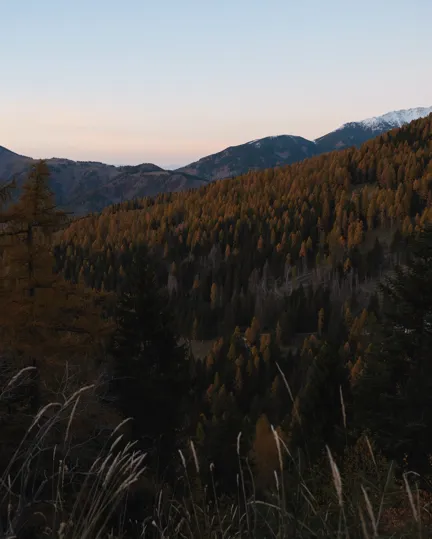
Shinrin-Yoku The alpine version of forest bathing is popular in South Tyrol

Oberholz Mountain Hut restaurant Designed by Peter Pichler and Pavol Mikolajcak

Lumen Museum Cantilevers out over the Dolomites
On an architectural note, young South Tyrolean creatives such as Peter Pichler, Matteo Thun, and Armin Pedevilla are pushing the envelope when it comes to structural sophistication. Take the building of the Lumen Museum of Mountain Photography by architect Gerhard Mahlknecht, which cantilevers out over the Dolomites, creating the ultimate photo-op. Or Pichler’s Oberholz Mountain Hut that he created with Pavol Mikolajcak—a restaurant with three “branches” that are surprisingly grand cathedral-like constructions of wood on the inside.
South Tyrol has a lot to offer for the adventure seekers, the nature lovers, the gourmands, and the culture aficionados. But above all, it is a place that creates the perfect conditions to enjoy the simple things: a perfect blue sky, the scent of forests and wildflowers, and fresh, fresh air.
Words Vidula Kotian Date 28 July 2022
Lana and Alpine Lakes Alina Santoso
Tre Cime di Lavaredo Reto Stähli
The Dolomites Philip Dalle Nogare
Pitzner Stephanie Füssenich
Abraham Udo Bernhardt
Baron Longo Lukas Larcher

Take a hike through fragrant Alpine forests, around mirror-still mountain lakes, past rumbling waterfalls, and brilliant wild meadows. There's something for the perennial rambler and the ardent hiker.
Food
The farm-to-table movement has been around longer than most of us think. It started as a counter cultural ethos in the 1960s to the ubiquity of canned goods in the postwar period.
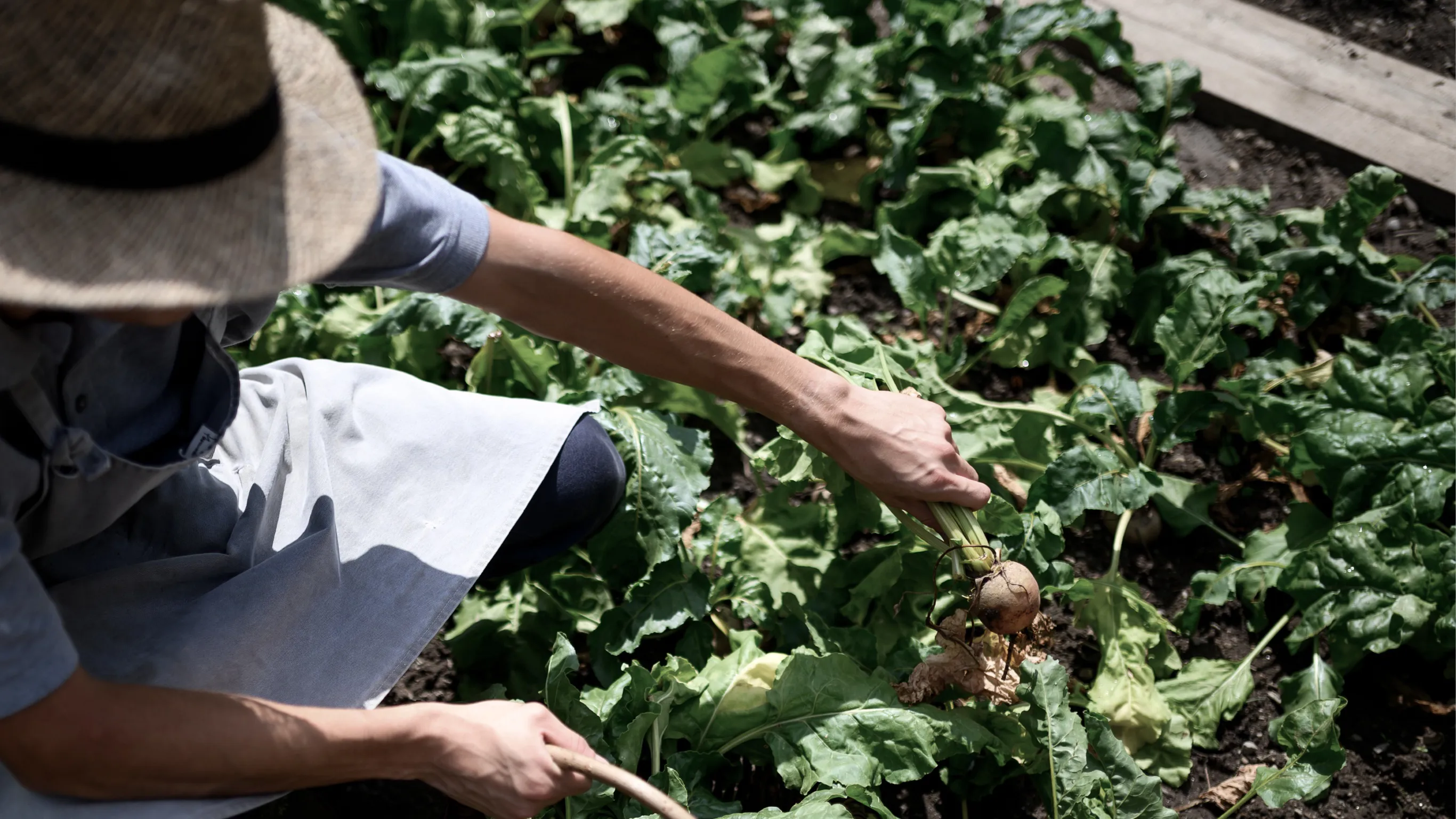
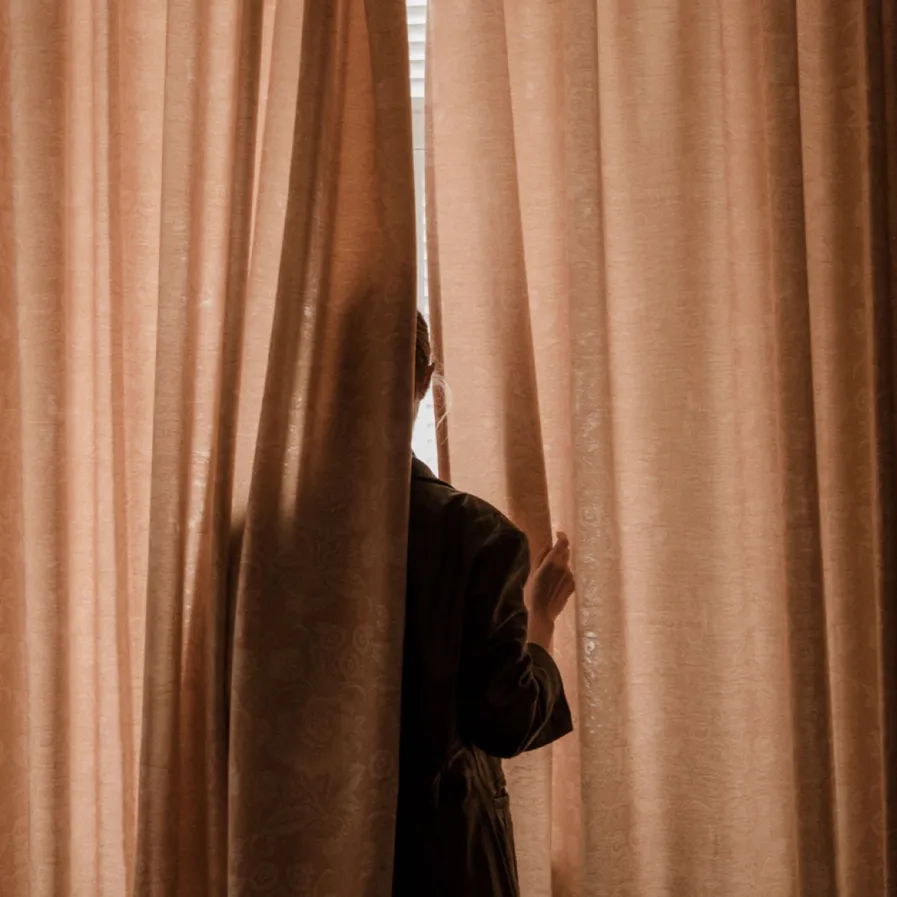
Destinations
Come spring, taking its cue from the surrounding city of Bolzano, Parkhotel Mondschein will offer its guest the highest quality of life in a breathtaking mountain setting with a modern Body and Mind studio and a variety of culinary delights.
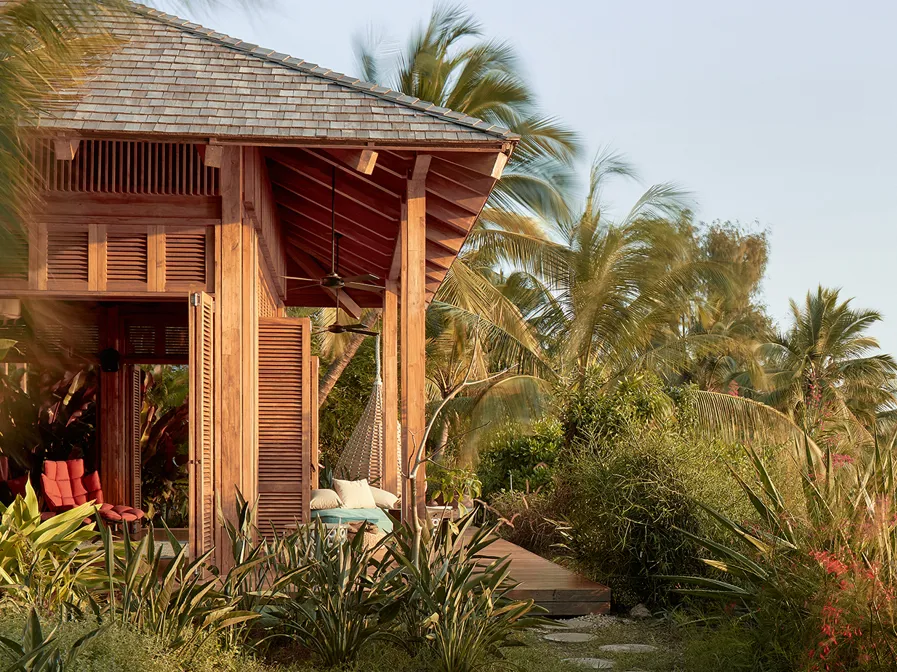
Destinations
These six hotels from around the world are an arborist’s dream and a joy to behold.